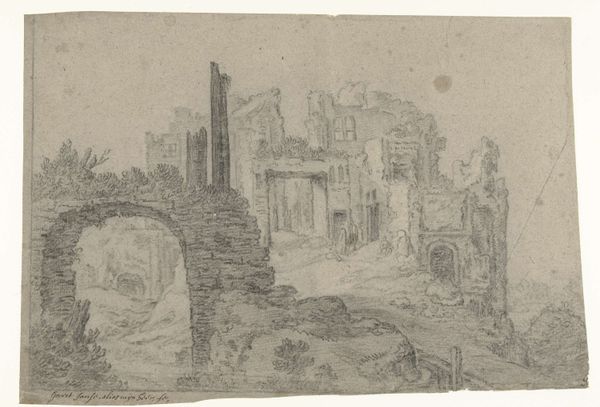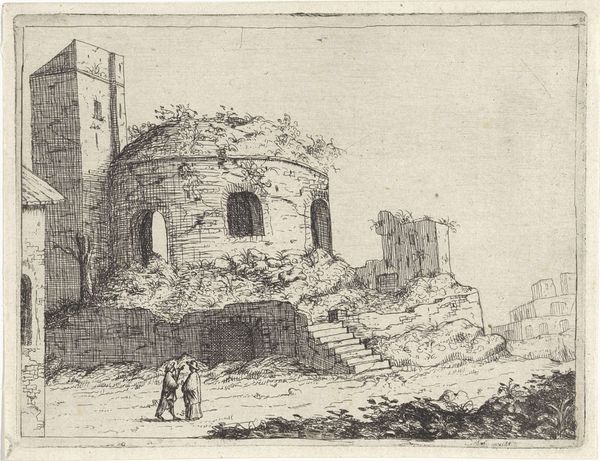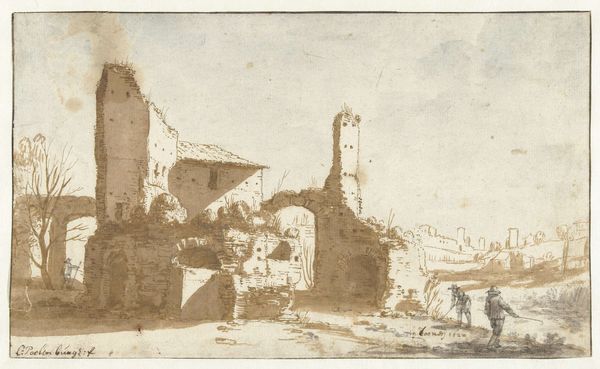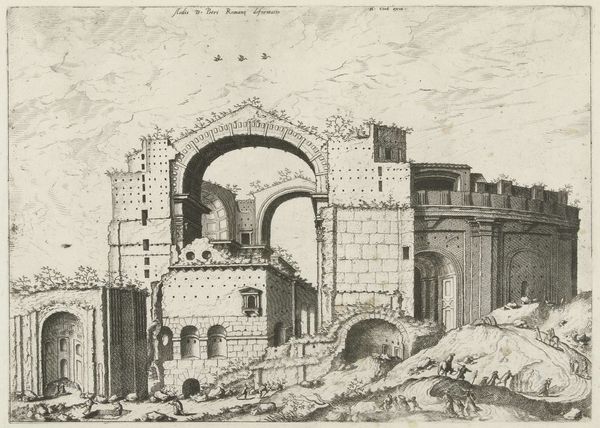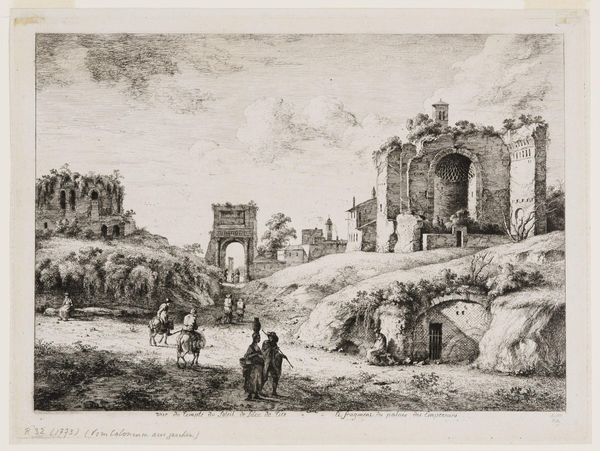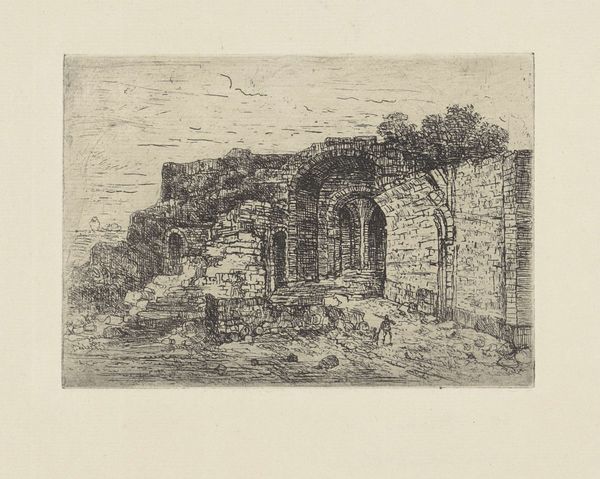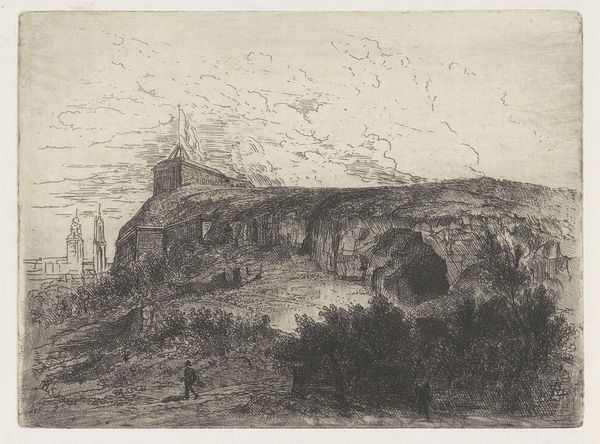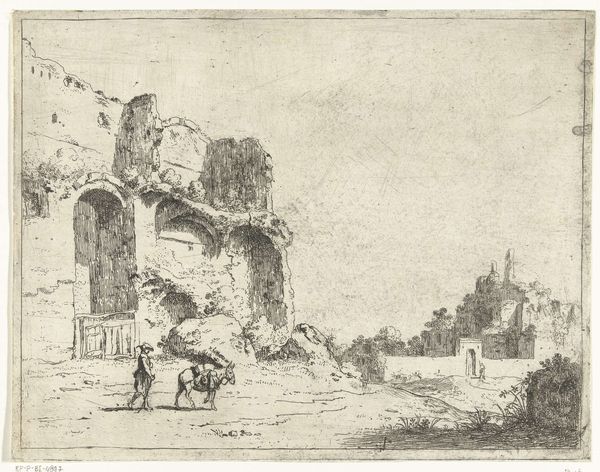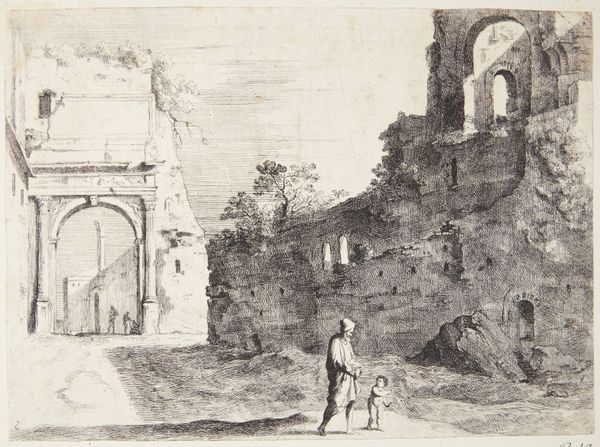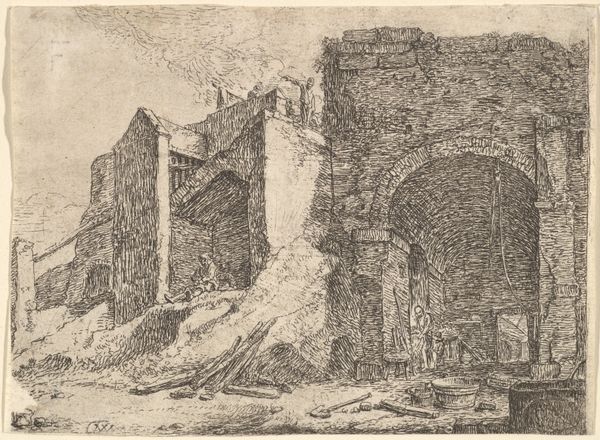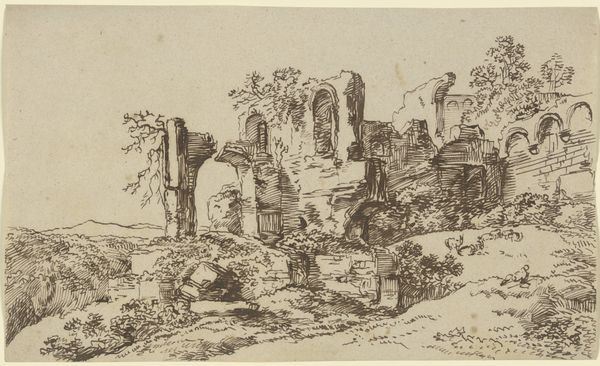
drawing, print, etching
#
drawing
# print
#
etching
#
landscape
#
figuration
#
romanesque
#
history-painting
Dimensions: height 122 mm, width 198 mm
Copyright: Rijks Museum: Open Domain
Curator: Welcome. We're standing before Willem Matthias Jan van Dielen's "Zuidelijk landschap met ruïne en herder met vee," created between 1815 and 1867. It's a captivating etching. Editor: My immediate reaction is one of solitude and perhaps melancholy. The stark contrast of light and shadow, combined with the crumbling ruins, evokes a sense of time passing. Curator: Indeed. Van Dielen employs etching to masterfully convey a landscape steeped in historical context. We see a ruined building in what appears to be a classical style—the arches, the suggestion of a once-grand structure. Editor: Note how the use of line creates depth and texture. The density of the marks, particularly in the foreground and the ruins themselves, makes them seem almost tactile. It gives them physical weight. Curator: Absolutely. And the contrast in line quality, from the rough, hurried marks delineating the vegetation to the finer, more deliberate strokes defining the architecture, highlights the scene's inherent tension between nature and culture. This aesthetic resonates with the Romanesque movement and its interest in historical and landscape subjects. Editor: The presence of the herder and his livestock is critical; it grounds the grand ruin within a cycle of daily life and the natural world. In light of sociopolitical movements in Europe and a newfound interest in historical societies during this period, pastoral imagery was being politicized as representing a more "pure," or localized cultural identity. Curator: Precisely. And that subtle interplay creates an allegory where both pastoral and historical elements converge. Note, too, how the eye is drawn into the composition through the apertures and into imagined realms of the former structure. Editor: I find the size fascinating as well, knowing this is an etching it provides an intimacy with such expansive themes. Curator: The artist provides not just a picture, but a carefully constructed commentary on how people build worlds that rise and fall. And we now engage with its echo through his art. Editor: Reflecting on this piece, the ruin isn't just a fragment of a building, it represents the layers of time. Its haunting beauty persists as we observe, bearing testament to history and natural forces.
Comments
No comments
Be the first to comment and join the conversation on the ultimate creative platform.

